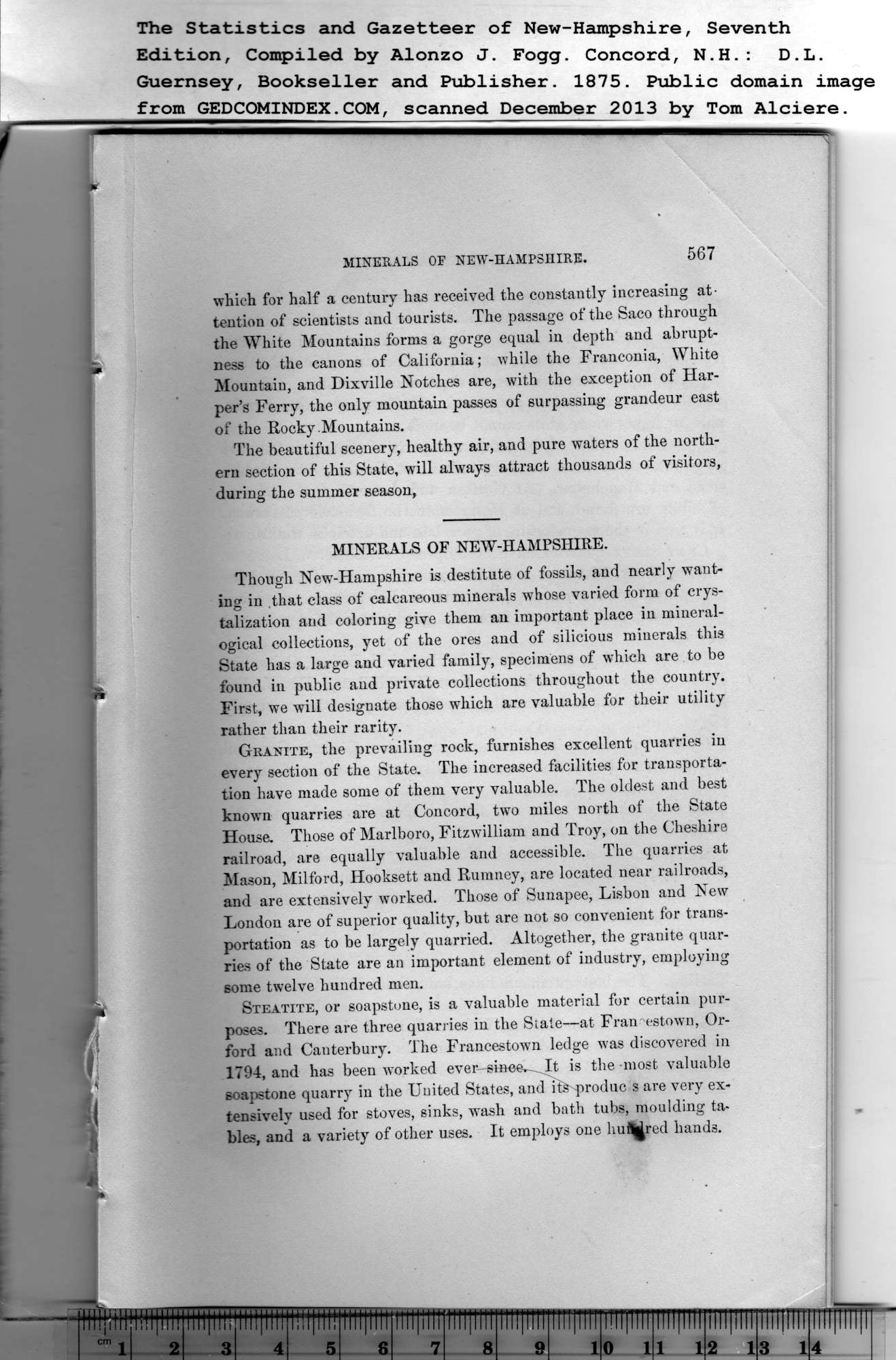|
MINERALS OF NEW-HAMPSHIRE. 567
which for half a century has received the constantly increasing at-
tention of scientists and tourists. The passage of the Saco through
the White Mountains forms a gorge equal in depth and abrupt-
ness to the canons of California; while the Franconia, White
Mountain, and Dixville Notches are, with the exception of Har-
per’s Ferry, the only mountain passes of surpassing grandeur east
of the Rocky Mountains.
The beautiful scenery, healthy air, and pure waters of the north-
ern section of this State, will always attract thousands of visitors,
during the summer season,
MINERALS OF NEW-HAMPSHIRE.
Though New-Hampshire is destitute of fossils, and nearly want-
ing in that class of calcareous minerals whose varied form of crys-
talization and coloring give them an important place in mineral-
ogical collections, yet of the ores and of silicious minerals this
State has a large and varied family, specimens of which are to be
found in public and private collections throughout the country.
First, we will designate those which are valuable for their utility
rather than their rarity.
Granite, the prevailing rock, furnishes excellent quarries in
every section of the State. The increased facilities for transporta-
tion have made some of them very valuable. The oldest and best
known quarries are at Concord, two miles north of the State
House. Those of Marlboro, Fitzwilliam and Troy, on the Cheshire
railroad, are equally valuable and accessible. The quarries at
Mason, Milford, Hooksett and Rumney, are located near railroads,
and are extensively worked. Those of Sunapee, Lisbon and New
London are of superior quality, but are not so convenient for trans-
portation as to be largely quarried. Altogether, the granite quar-
ries of the State are an important element of industry, employing
some twelve hundred men.
Steatite, or soapstone, is a valuable material for certain pur-
poses. There are three quarries in the Stale—at Francestown, Or-
ford and Canterbury. The Francestown ledge was discovered in
1794, and has been worked ever—sinee^Tt is the most valuable
soapstone quarry in the United States, and rfe produc s are very ex-
tensively used for stoves, sinks, wash and bath tubs, moulding ta-
bles, and a variety of other uses. It employs one hu^red hands.
PREVIOUS PAGE ... NEXT PAGE
This page was written in HTML using a program written in Python 3.2
|
